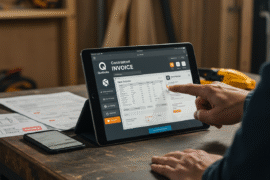This article may contain references to products or services from one or more of our advertisers or partners. We may receive compensation when you click on links to those products or services. Nonetheless, our opinions are our own.
The information presented in this article is accurate to the best of our knowledge at the time of publication. However, information is subject to change, and no guarantees are made about the continued accuracy or completeness of this content after its publication date.
It can be hard to figure out how to save for retirement, especially with plans like the SIMPLE IRA. If you feel confused by the details of your plan, you’re not alone. Many individuals who believed they made a good choice later discover that managing a SIMPLE IRA is more challenging than they initially expected.
We’ll offer practical ways to simplify your investment decisions so you can make the most of your retirement savings. Taking a step back and looking over your plan will help you feel more sure about how to handle your SIMPLE IRA without adding any stress. Let’s get rid of the confusion and put you on a better path to retirement.
- Basics of a SIMPLE IRA
- Common Challenges in Managing Your SIMPLE IRA
- Exploring Rollover Options: What’s Right for You?
- Tax Impact of a SIMPLE IRA Rollover
- Easy Ways to Simplify Retirement Savings
- Making Smart Choices for Your Financial Future
- Things to Consider Before Moving a 401(k) to a SIMPLE IRA
- Conclusion
- Frequently Asked Questions
- Recommended Reads
Basics of a SIMPLE IRA
For self-employed individuals and small businesses, a SIMPLE IRA can be a smart option for retirement savings. While the name suggests simplicity, it can be more manageable than expected. Several features make the savings process smoother and reduce the number of rules to follow.
Here are some of the features that make a SIMPLE IRA easy to use:
- Contributions: You can contribute up to $15,500 per year. If you’re over 50, you can contribute an additional $3,500, allowing you to save even more.
- Employer Contributions: Employers must either match employee contributions up to 3% of salary or contribute a flat 2% for eligible employees, benefiting both parties.
- Tax Benefits: Contributions reduce your taxable income, and the money grows tax-deferred until retirement.
It’s also important to understand the rules for withdrawals. If you withdraw funds before age 59½, you may have to pay a 10% penalty. For this reason, it’s generally best to leave your funds invested until retirement.
Here’s a simple example of projected growth over time:
| Years | Annual Contribution ($) | Estimated Growth at 6% APY ($) |
|---|---|---|
| 10 | 15,500 | Approximately 220,000 |
| 20 | 15,500 | Approximately 800,000 |
With this foundational knowledge, you’ll be better prepared to manage your SIMPLE IRA and plan for long-term financial security.
Common Challenges in Managing Your SIMPLE IRA
Although a simple IRA is designed to be straightforward, several challenges may arise. One of the biggest is the two-year waiting period. Contributions must remain in the account for at least two years before they can be rolled over without penalty. Moving funds early may trigger tax issues.
Another challenge is choosing where to roll over your SIMPLE IRA. Fees, account rules, and investment options can vary significantly between providers. Consider the following:
- Investment Options: Make sure the new account offers investment choices that match your goals.
- Fees: Management fees and commissions can affect your long-term returns. Compare costs between providers.
- Custodial Requirements: Some providers require specific paperwork or steps when transferring funds.
By evaluating these areas and staying organized, you’ll be better equipped to handle rollovers and manage your retirement plan efficiently.
Exploring Rollover Options: What’s Right for You?
When changing a SIMPLE IRA, you have several options. Each has its own advantages and considerations based on your financial goals.
- Traditional IRA: This allows your funds to remain tax-deferred. It’s a popular option for its flexibility and no required minimum distributions (RMDs) until age 73.
- Roth IRA: A Roth IRA is a good choice if you expect to make more money in retirement because it lets you grow and take money out tax-free later.
- Employer-Sponsored Plans: If you start a new job with a 401(k) plan, you might consider rolling your SIMPLE IRA into it. Some 401(k)s offer better investment options and lower fees.
| Option | Tax Implications | Withdrawal Rules |
|---|---|---|
| Traditional IRA | Tax-deferred | RMDs begin at age 73 |
| Roth IRA | Taxed on contributions | No required minimum distributions |
| Employer 401(k) | Tax-deferred | RMDs begin at age 73 |
Select the option that aligns with your long-term financial goals. Speaking with a financial advisor can help you make an informed decision with added peace of mind.
Tax Impact of a SIMPLE IRA Rollover
Taxes can complicate the rollover process if you’re not aware of the timing. If you’ve had your SIMPLE IRA for less than two years, rolling it over to a traditional IRA or another plan may result in the entire balance being taxed as income. Early withdrawals within the first two years are considered taxable events.
Points to remember:
- Timing Matters: Wait until two years have passed before initiating a rollover to avoid taxes and penalties.
- Direct Rollovers: This method moves your funds directly from one provider to another, avoiding withholding taxes.
- Roth Conversions: If you convert your SIMPLE IRA to a Roth IRA, be prepared to pay income tax on the full amount since Roth IRAs are funded with after-tax dollars.
Understanding these rules can help you avoid unexpected tax bills. If you’re unsure, consult a tax professional who can offer advice tailored to your situation.
Voted "Best Overall Budgeting App" by Forbes and WSJ
Monarch Money helps you budget, track spending, set goals, and plan your financial future—all in one app.
Get 50% OFF your first year with code MONARCHVIP
Easy Ways to Simplify Retirement Savings
Managing a simple IRA doesn’t have to be complicated. Use these tips to make your savings strategy more effective:
- Check Your Investments: Review where your money is invested. Do your current investments match your goals and risk tolerance?
- Combine Accounts: If you have multiple SIMPLE IRAs, consolidating them into one can make tracking contributions and performance easier.
- Consider a Rollover: Moving your SIMPLE IRA to a Traditional or Roth IRA may give you access to better investments or lower fees.
Simplifying your retirement accounts helps reduce stress and improve your overall financial planning. Fewer accounts with clear terms often result in better management.
Making Smart Choices for Your Financial Future
If managing your simple IRA feels overly complex, consider rolling over your funds into a more streamlined retirement account. This can improve your investment flexibility, lower your fees, and simplify your savings.
Before making a rollover, think about these benefits:
- Simplified Management: Easier access and tools save time managing your plan.
- Better Investment Options: More choices help you build a portfolio that suits your strategy.
- Lower Fees: You may reduce costs by choosing an account with a simpler, transparent fee structure.
| Current SIMPLE IRA | Proposed Account |
|---|---|
| Complex fee structure | Transparent, competitive fees |
| Limited investment options | Wide variety of funds and assets |
| High maintenance | Easy online management tools |
Smart decisions today can improve your financial life now and help ensure a more secure retirement in the future.
Things to Consider Before Moving a 401(k) to a SIMPLE IRA
Thinking about moving your 401(k) to a SIMPLE IRA? Here are some important factors to evaluate:
- Investment Choices: Does the SIMPLE IRA offer more or better options than your current 401(k)?
- Fees and Costs: Compare fees and hidden charges in both accounts to avoid paying more.
- Ease of Management: Consider whether the SIMPLE IRA provides easier online tools or customer service.
Also consider:
- Clarity and Flexibility: How easy is it to understand and change fee structures in each account?
- Company Match: Does your 401(k) offer matching contributions? If so, weigh this heavily.
- Tax Effects: Understand any tax implications or penalties for making the transfer.
Your Investment Options
Before transferring a 401(k) to a SIMPLE IRA, make sure you have access to a diverse mix of investments and that fees are manageable. Evaluate how easy the platform is to use and how well it fits your long-term financial strategy. Clear fee structures are critical for making sound decisions. Don’t overlook company matches or tax consequences.
Consider Your Retirement Goals
When deciding whether to move your 401(k) to a SIMPLE IRA, always reflect on your long-term retirement goals. Review fees, investment access, platform usability, company match, tax considerations, and your broader financial strategy. Making thoughtful choices today can help ensure a more secure and comfortable retirement.
Conclusion
It doesn’t have to be hard to manage a SIMPLE IRA. You can get the most out of it and make your retirement planning easier if you know what you’re doing and have a plan. If you’re thinking about rolling over to get better investment options, lower fees, or easier account management, it’s important to know the rules, especially the two-year waiting period and tax consequences.
Taking the time to look over your current plan, look into rollover options, and make sure your choices are in line with your long-term retirement goals can help you feel more confident about your money. You can lower your stress and build a stronger foundation for a safe and rewarding retirement by making smart choices today.
Frequently Asked Questions
What is a SIMPLE IRA?
A SIMPLE IRA is a retirement savings plan for small businesses and their employees. Both employers and employees can contribute to the account.
Why might someone want to roll over a SIMPLE IRA?
Rolling over a SIMPLE IRA can offer better investment options, reduced fees, and easier management. It also helps consolidate your retirement savings.
What does it mean to move a complicated SIMPLE IRA?
A complicated SIMPLE IRA may include multiple accounts, unclear investment choices, or high fees. Rolling it into a traditional or Roth IRA can simplify management.
What steps are needed to move money from a SIMPLE IRA?
First, ensure two years have passed since you opened the account. Then, select and open a new account, request a transfer, and complete the rollover within 60 days.
Is there a tax impact when transferring a SIMPLE IRA?
If you roll over the funds correctly, you won’t owe taxes. However, withdrawing funds instead of rolling them over could result in income taxes and penalties.

Reviewed and edited by Albert Fang.
See a typo or want to suggest an edit/revision to the content? Use the contact us form to provide feedback.
At FangWallet, we value editorial integrity and open collaboration in curating quality content for readers to enjoy. Much appreciated for the assist.
Did you like our article and find it insightful? We encourage sharing the article link with family and friends to benefit as well - better yet, sharing on social media. Thank you for the support! 🍉
Article Title: Want to Save More? Invest ,500 in a SIMPLE IRA for a Stress-Free Retirement
https://fangwallet.com/2025/07/19/want-to-save-more-invest-15500-in-a-simple-ira-for-a-stress-free-retirement/The FangWallet Promise
FangWallet is an editorially independent resource - founded on breaking down challenging financial concepts for anyone to understand since 2014. While we adhere to editorial integrity, note that this post may contain references to products from our partners.
The FangWallet promise is always to have your best interest in mind and be transparent and honest about the financial picture.
Become an Insider

Subscribe to get a free daily budget planner printable to help get your money on track!
Make passive money the right way. No spam.
Editorial Disclaimer: The editorial content on this page is not provided by any of the companies mentioned. The opinions expressed here are the author's alone.
The content of this website is for informational purposes only and does not represent investment advice, or an offer or solicitation to buy or sell any security, investment, or product. Investors are encouraged to do their own due diligence, and, if necessary, consult professional advising before making any investment decisions. Investing involves a high degree of risk, and financial losses may occur including the potential loss of principal.
Source Citation References:
+ Inspo
There are no additional citations or references to note for this article at this time.












































